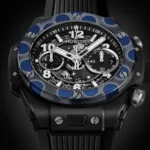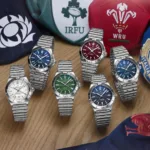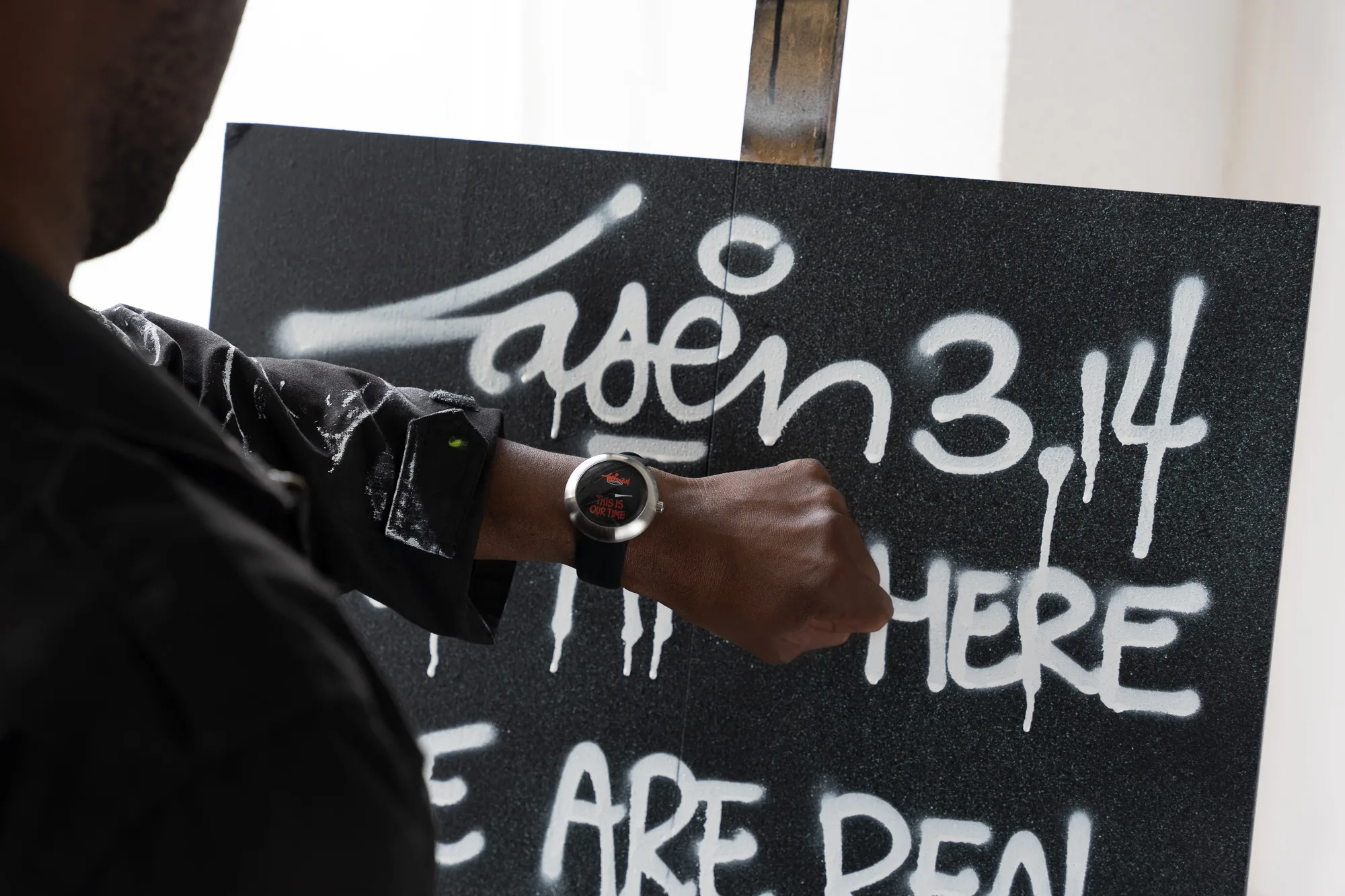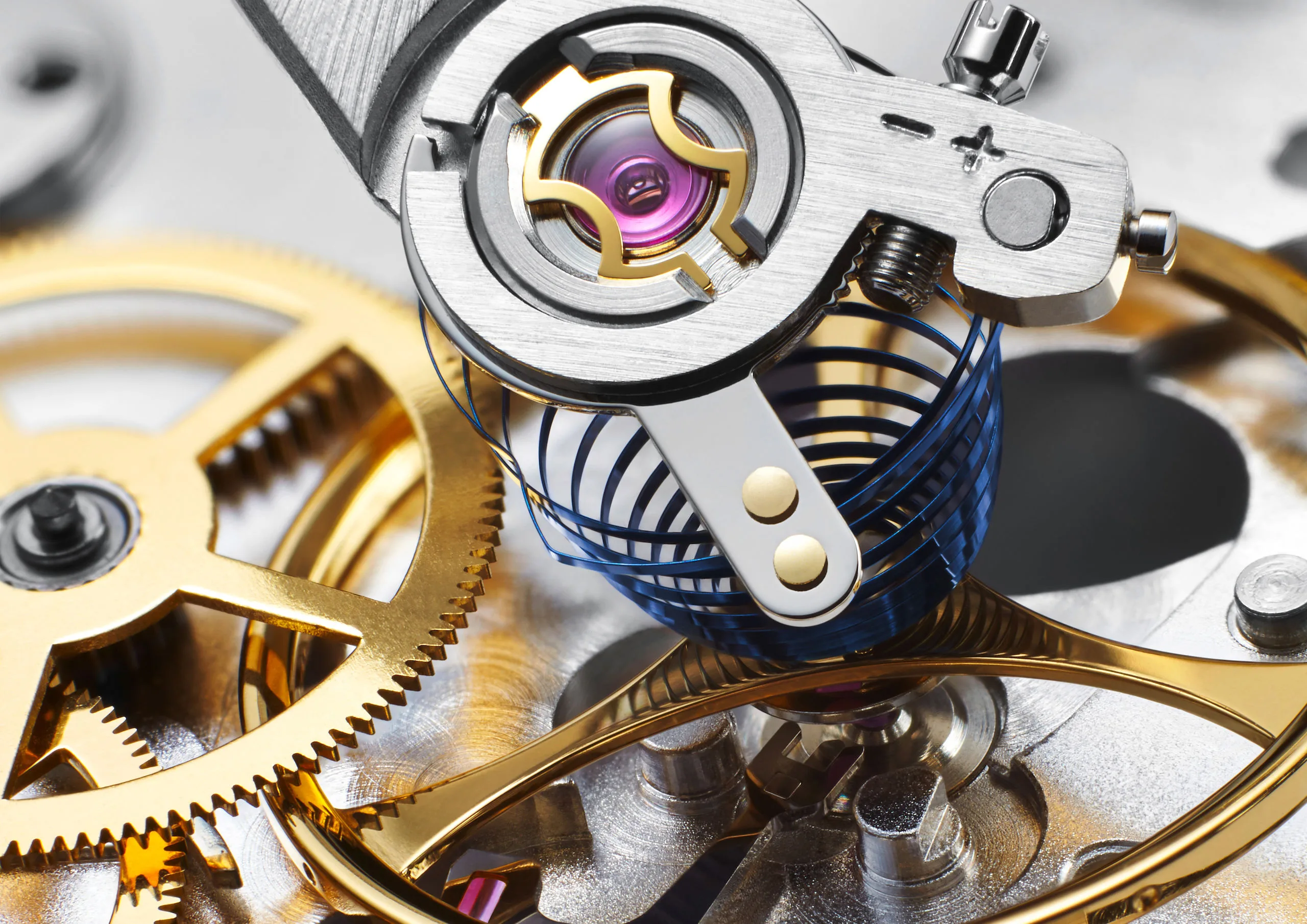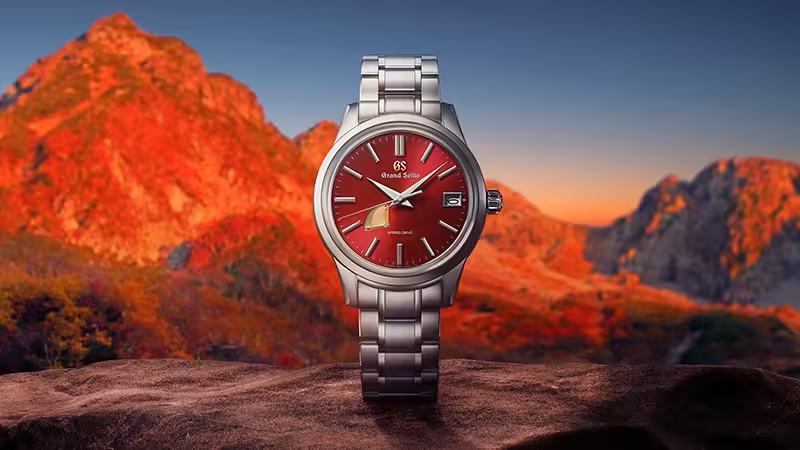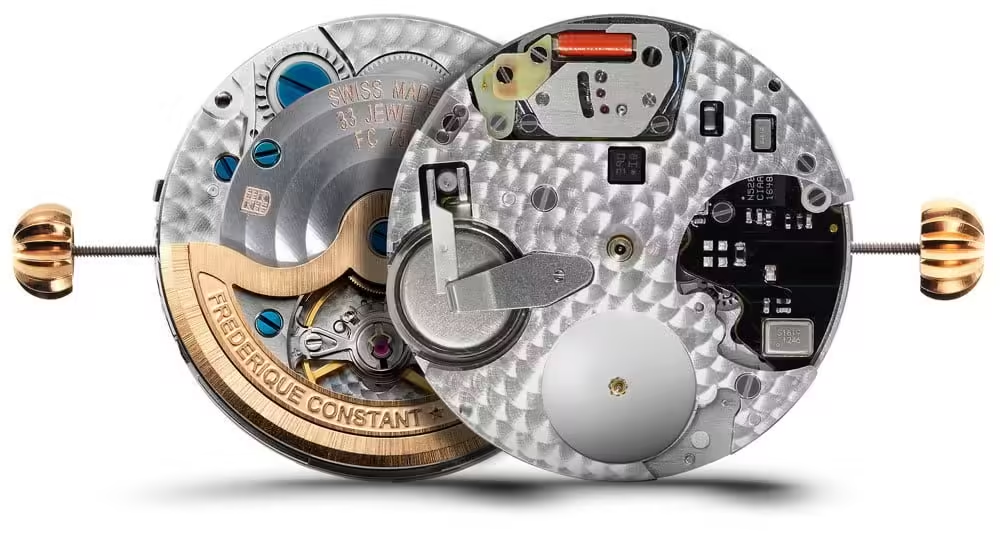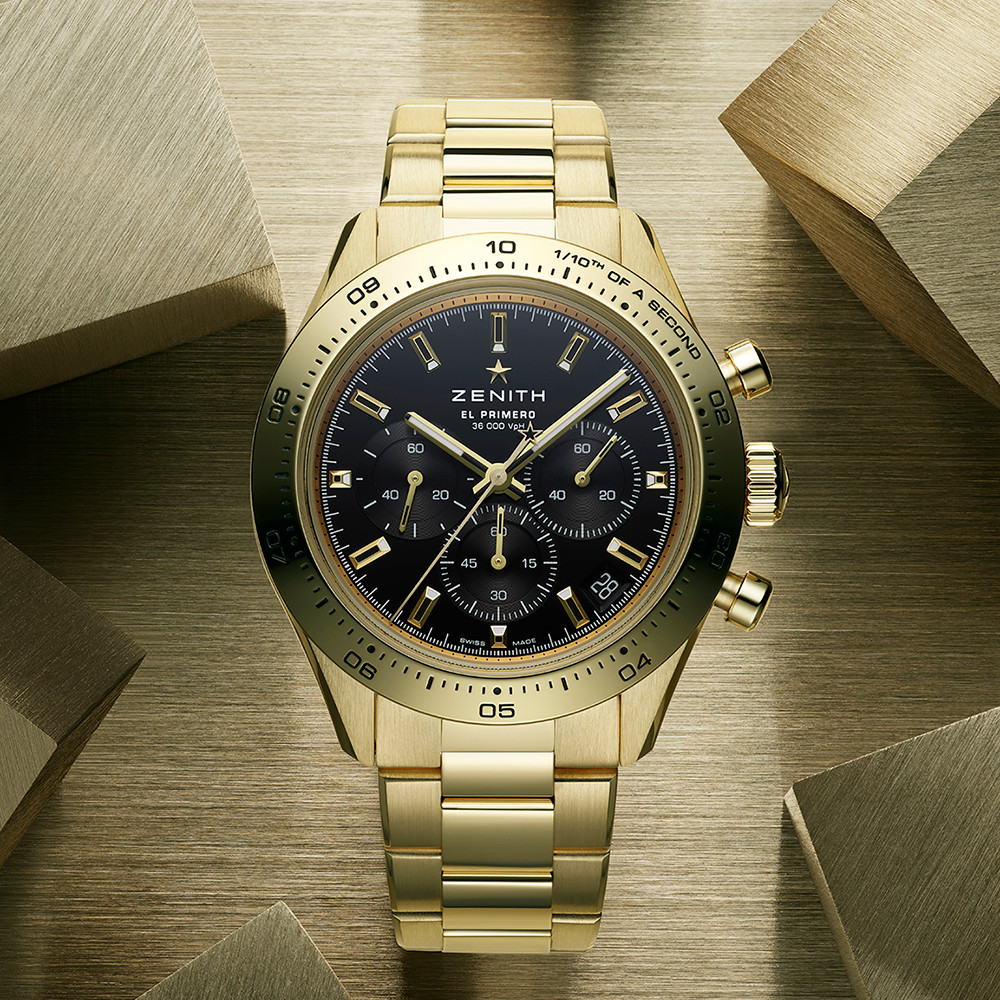- On the reverse case-backs, you’ll find meticulously crafted replicas of the Japanese artist’s woodblock prints, including “The Waterfall at Ono on the Kisokaido Road” (Kisokaidō Ono no bakufu) and “The Waterfall Where Yoshitsune Washed his Horse at Yoshino in Yamato Province” (Washū Yoshino Yoshitsune uma arai no taki).
- These exquisite timepieces exemplify the exceptional skills of the Manufacture’s Métiers Rares™ atelier in the art of miniature painting, guillochage, and Grand Feu enamelling.
Since its inception, Jaeger-LeCoultre has embraced Asian motifs and adapted Eastern decorative techniques to enhance their special timepieces. This tradition not only pays tribute to the cultural exchange between Asia and Europe spanning over 2,000 years but also reflects the Maison’s commitment to perpetuating this heritage. In 2023, La Grande Maison honors this rich legacy by introducing two new Reverso Tribute timepieces adorned with miniature-painted enamel reproductions of works by Katsushika Hokusai, the renowned 19th-century Japanese artist. These masterpieces feature “The Waterfall at Ono on the Kisokaido Road” (Kisokaidō Ono no bakufu) and “The Waterfall Where Yoshitsune Washed his Horse at Yoshino in Yamato Province” (Washū Yoshino Yoshitsune uma arai no taki).
Hokusai’s acclaim stems from his innovative approach to ukiyo-e painting, expanding a genre previously centered on the indulgent lifestyle of Edo Japan’s merchant class to encompass a broader range of subjects, including landscapes, flora, and fauna.
The two works chosen for the new Reverso Tribute enamel models are part of a series of eight ukiyo-e paintings titled “A Tour of the Waterfalls of the Provinces” (Shokoku taki meguri), which Hokusai created during his two-year journey through Japan’s main island, Honshu, from 1831 to 1833. This expedition allowed him to discover some of the most captivating landscapes in the country. Jaeger-LeCoultre’s Métiers Rares™ atelier, in previous years, paid homage to these works with the Reverso Tribute model in 2021, featuring the Kirifuri waterfall, followed by the Amida waterfall in 2022. The two new pieces introduced in 2023 continue this tribute to the Japanese master, selecting subjects that also echo La Grande Maison’s deep-rooted connection to nature.
A Remarkable Japanese Master Enchanted by the Natural World
Hokusai (c.1760–1849) stood out for his innovative compositions and ingenious use of color. He was an incredibly prolific illustrator, printmaker, and ukiyo-e artist. In his era, woodblock printing thrived as a prominent method for reproducing ukiyo-e paintings. Hokusai’s fame had a profound impact, as ukiyo-e and woodblock prints played a pivotal role in shaping the Western perception of Japanese art. His monumental series, “Thirty-Six Views of Mount Fuji,” notably features “The Great Wave off Kanagawa,” one of the most recognized artworks globally. Jaeger-LeCoultre paid tribute to this masterpiece with a limited-edition Reverso in 2018.
One of Hokusai’s groundbreaking achievements was his series, “A Tour of the Waterfalls of the Provinces,” which marked the first exploration of the theme of falling water in ukiyo-e painting. These works are intensely expressive, with each piece dominated by the majestic waterfall, rendering the human observers seemingly minuscule in comparison.
Capturing the Beauty and Power of Waterfalls
The painting “The Waterfall at Ono” showcases a renowned location in Nagano Prefecture, situated along the ancient road that connected Kyoto, the historic capital, with the Tokugawa shogunate’s seat in Edo, which is present-day Tokyo. Next to the falls, a small Shinto shrine graces a rocky promontory, while beneath a bridge, a group of travelers stands in reverence of the waterfall’s immense power. The composition of the artwork intensifies the impression of this power, as the water cascades vertically between two towering cliffs. Japanese tradition holds that extraordinary natural phenomena signify the presence of a kami or Shinto deity, and Hokusai’s depiction infuses his scenes with a vivid sense of vitality, reflecting his animistic beliefs.
“The Waterfall at Yoshino” portrays a famous Japanese anecdote from the life of General Minamoto no Yoshitsune (1159–1189). In his flight from his elder brother, who deemed him a traitor for aligning with Emperor Go-Shirakawa, the General found a moment of respite while journeying through the mountains of Yoshino, located in today’s Nara Prefecture. In this compellingly graphic composition, the waterfall’s dynamic curves convey the unbridled force of water coursing through a deep valley framed by trees. It evokes an image of a colossal hand cradling the earth with splayed fingers, serving as a poignant exploration of the interplay between nature, humanity, and animals.
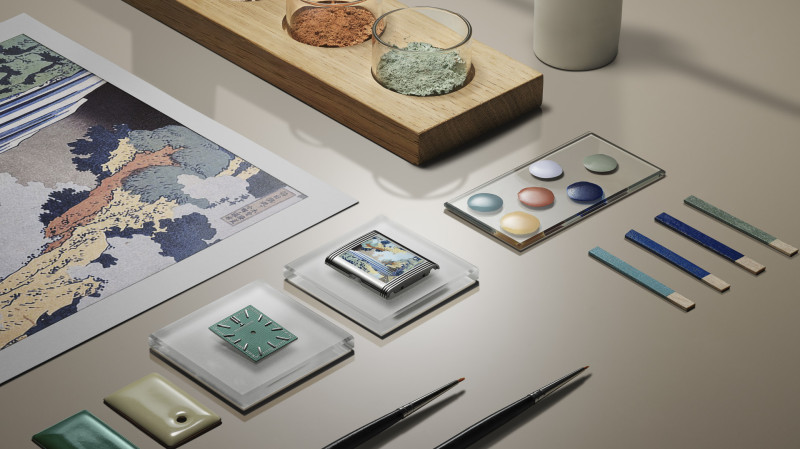
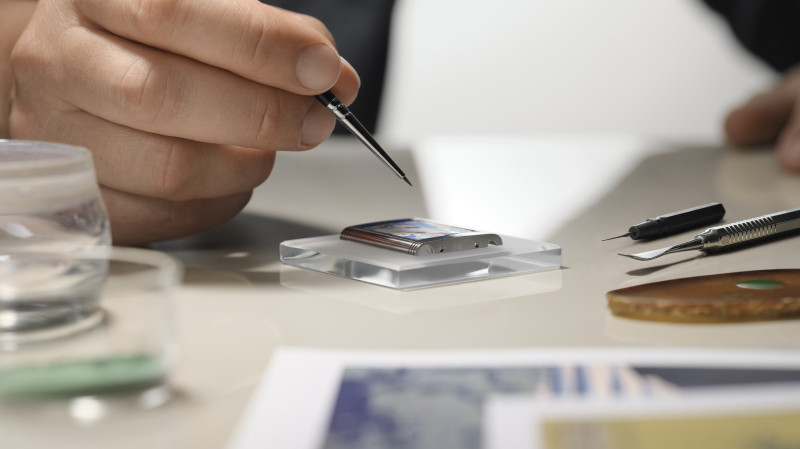
Artistry and Precision in Miniature
The exquisite miniature paintings gracing the Reverso case-backs were meticulously crafted using the Geneva technique. This intricate process involves applying a minimum of 14 layers of enamel, each subjected to a scorching 800°C firing before the subsequent layer can be added. This labor-intensive technique demands a total of 80 hours of painstaking craftsmanship. Beyond the technical achievement of replicating Hokusai’s original colors, including the graduated bokashi effect, in a wholly different medium, the enamelist faced the formidable task of faithfully reproducing every intricate detail with remarkable precision on a scale approximately one-tenth the size of the original. Perhaps most remarkable of all, the cartouches at the top of each frame bear the original captions, meticulously hand-written on a microscopic scale, yet perfectly legible and accurate. The enamelist not only masters this technical feat but also strives to convey the essence and artistic touch of the original artist, infusing each work with emotional depth and soul.
The front dials of the watches feature a minimalist and understated design, adorned with faceted appliqué hour-markers, Dauphine hands, and a chemin-de-fer minutes track—a characteristic of all Reverso Tribute timepieces. This simplicity, however, belies the exceptional craftsmanship required for their creation. The background of both dials undergoes meticulous hand guillochage: the Waterfall at Ono piece boasts a classical barleycorn pattern, necessitating three to four hours of painstaking precision. In the case of the Waterfall at Yoshino, the artisan applied a lozenge pattern comprised of no less than 800 lines, each requiring five passes of the lathe (a total of 4,000 passes), resulting in eight hours of work dedicated solely to the guillochage. Once the guillochage is complete, an additional four to five layers of translucent green enamel are meticulously applied, with each layer necessitating separate firing and drying. This process amounts to an additional eight hours of labor over the course of a week.
Representing the embodiment of La Grande Maison’s vision of the world of art and culture, and showcasing the exceptional talents found within the Métiers Rares™ (Rare Handcrafts) atelier at the Manufacture in the Vallée de Joux, the two new Reverso Tribute Enamel timepieces stand as a noble addition to the ongoing legacy of the Reverso, serving as an expansive canvas for creative expression.
For more information, please visit Jaeger-LeCoultre.com.
